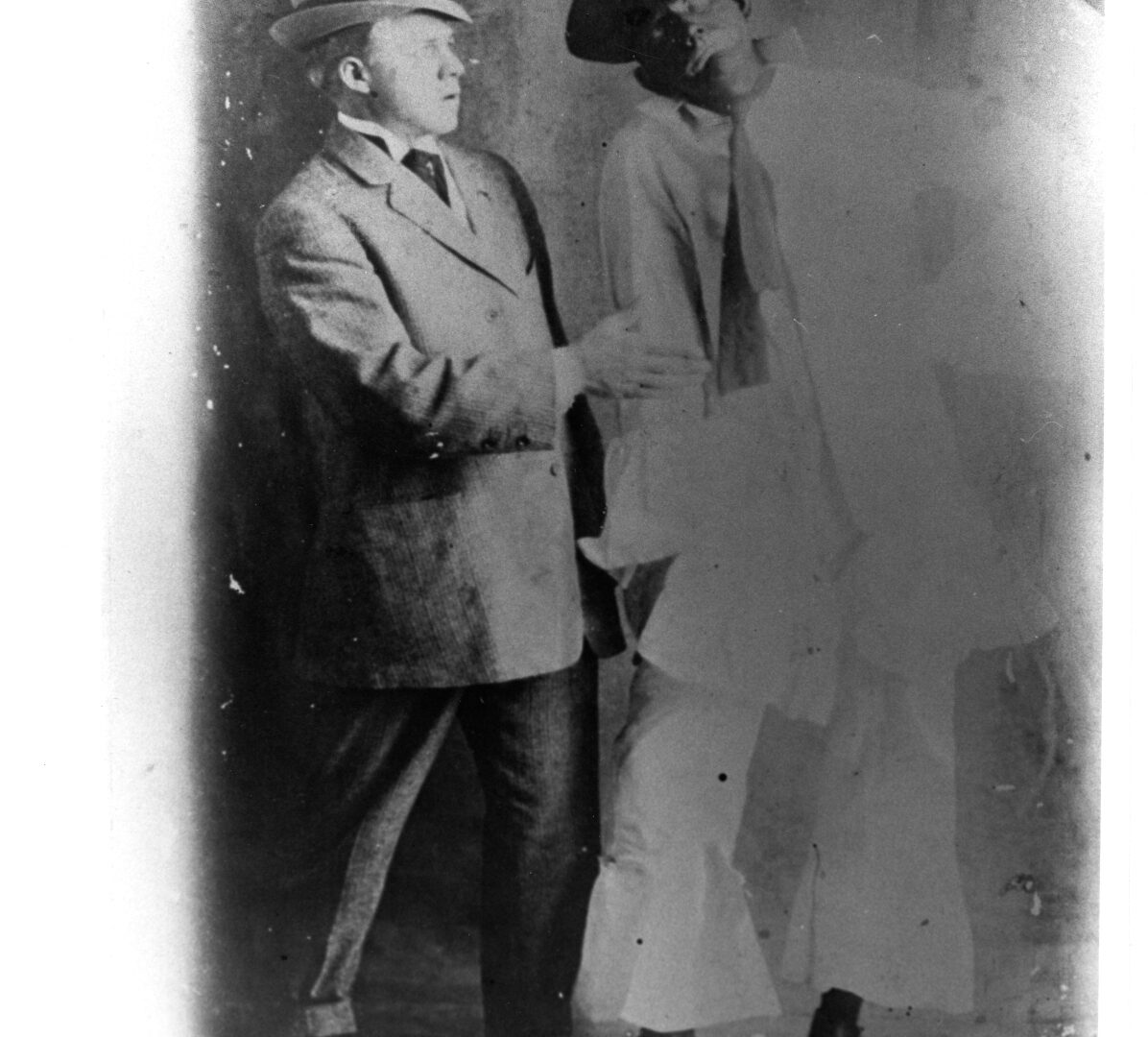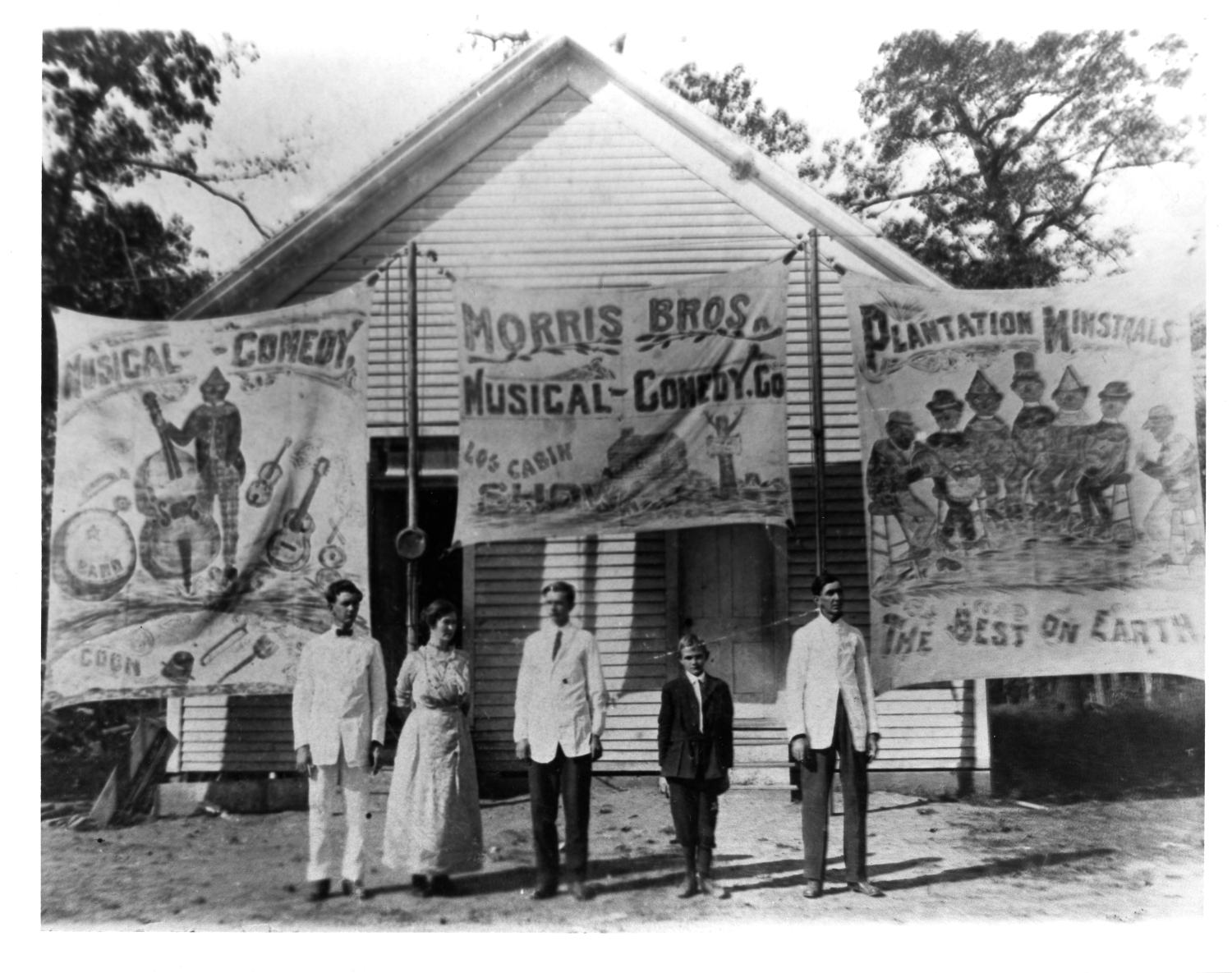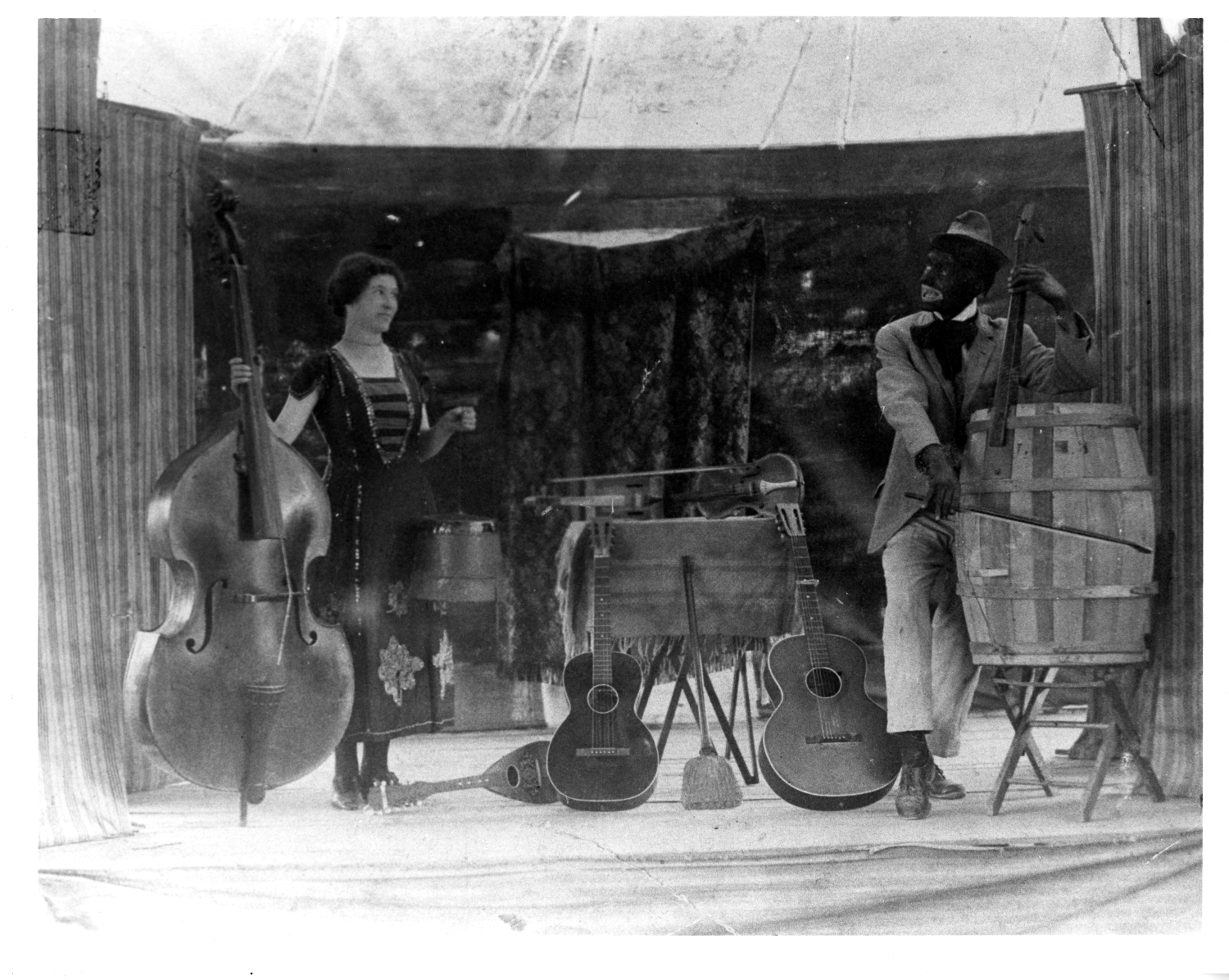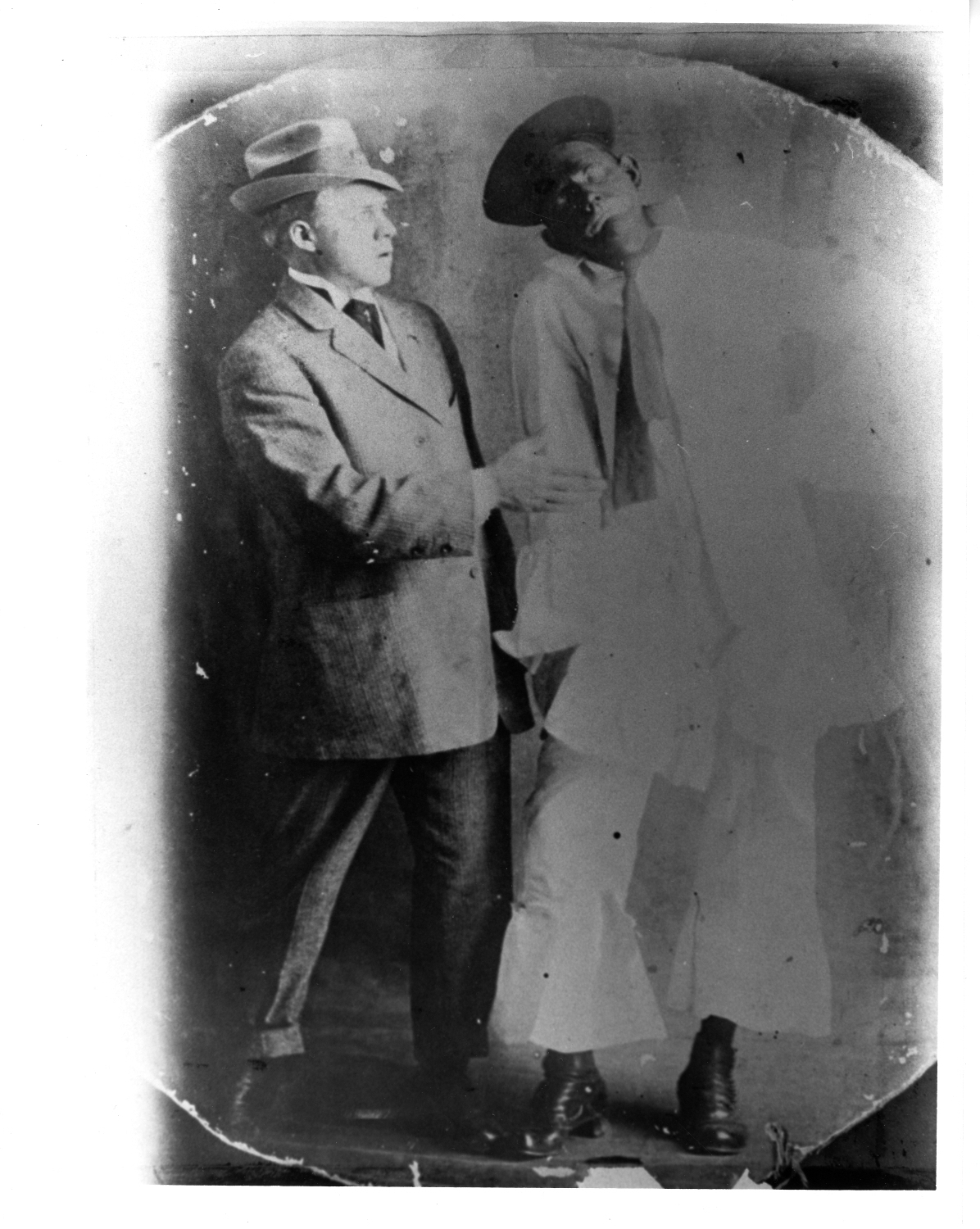Introduction
Minstrel shows, also called minstrelsy, were a type of theatrical performance, in which actors played figures based on racial stereotypes. They were very popular in the United States from the early 19th to the early 20th century. Blackface, where white actors darkened their skin to enact racist stereotypes, was one form of minstrel shows popular among white audiences.
In this activity, you will examine three early 20th century photos of a theater group known as the Morris Brothers Comedy Shows (later named Morris and Ragland Show). The Morris Brothers was a theater and musical group that performed in Arkansas in the early 20th century. Their program included minstrel shows and specifically blackface. We do not know much about them but from the three photos used in this exercise, we can learn a lot about the nature of their performance and about their audience.
Activity Questions
- Describe the Morris family as shown in this picture.
- Examine the banners behind the family. What were they used for? What can we learn about the shows that the group performed from the banners?
- Why do you think the group is called “Morris Brothers Musical Comedy Company” when at least one member is not a Morris brother (which member)?
- Examine and describe the two individuals in the picture. Who are they? What are they wearing? What are they doing? What objects are they using?
- How is the black character presented in this photo? Is the white character presented in the same way?
- What kind of show are these two actors performing?
- Examine and describe the two individuals in the picture. Who are they? What are they wearing? What are they doing?
- How is a black character presented in this photo? Is the white character presented in the same way? What kind of show are these two actors performing?
Based on your analysis of all the three photos of the Morris Brothers, answer the following questions:
1. Who do you think was the target audience of this comedy group?
2. What do you think was the purpose of blackface minstrelsy?
3. Although these photos show us how white Americans spent their leisure time in the early 20th century, they also tell us something very important about the African American experience at the time. What can we learn about the experience of African Americans in the South in the early 20th century from these photos?
4. Based on what you have learned about blackface minstrelsy, why would it be inappropriate and offensive for a white person to darken their skin and pretend that they are a person of color?
5. How does what you have learned about blackface minstrelsy connect to what you learned previously about the African American experience?
Primary Sources
To learn more about the primary sources featured in the activities above, click the following links:
Arkansas Social Studies Standards
African American History, Grades 9 – 12
- Strand: Hardening of Jim Crow 1877-1920
- Content Standard 4: Students will analyze the African American experience in the post-Reconstruction Era.
- HJC.4.AAH.1: Research divergent paths and challenges faced by African American men and women from post-Reconstruction to the early 20th century
US History Since 1890, Grades 9 – 12
- Strand: Era 7: Emergence of Modern America 1890-1930
- Content Standard 2: Students will evaluate social, economic, and political changes in the United States between 1890 and 1930.
- Era7.2.USH.4: Evaluate the effects of the political issues of the 1920s (e.g., xenophobia, nativism, racism, communism, Open Door Policy, labor movements, equality)
Key Terms
Downloadable Guides and Handouts
We encourage K-12 educators to use History Alive: Virtually! in a way that will best match their classroom needs. The “Exercise” handout includes a complete exercise as featured on this website, the “Primary Sources” handout includes only primary sources used in the exercise, and the “Questions” handout includes analytical questions from the exercise but is editable and can be easily changed to best match students’ needs.




